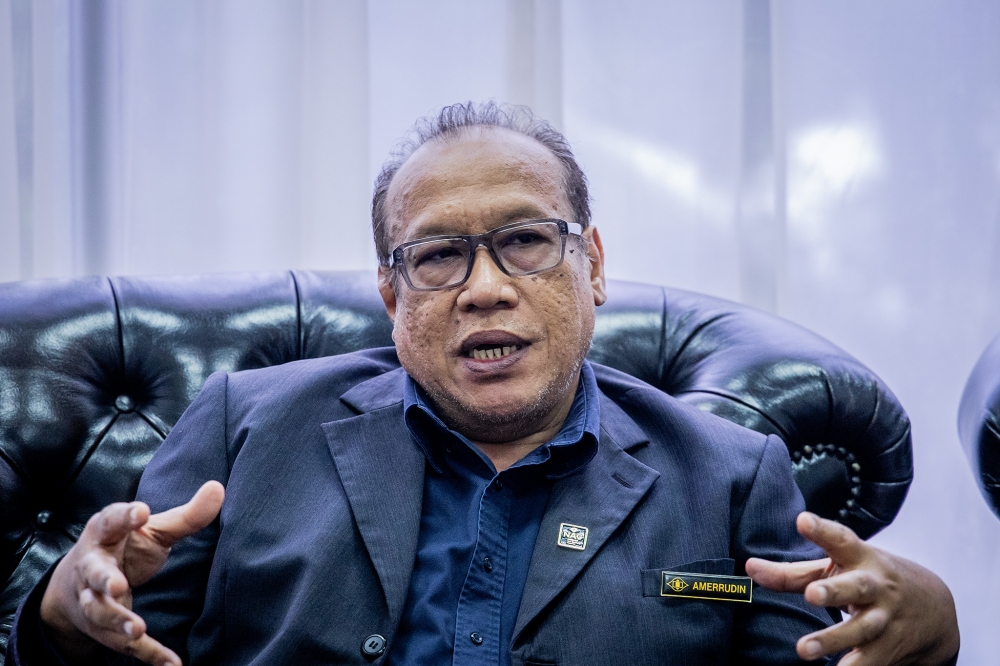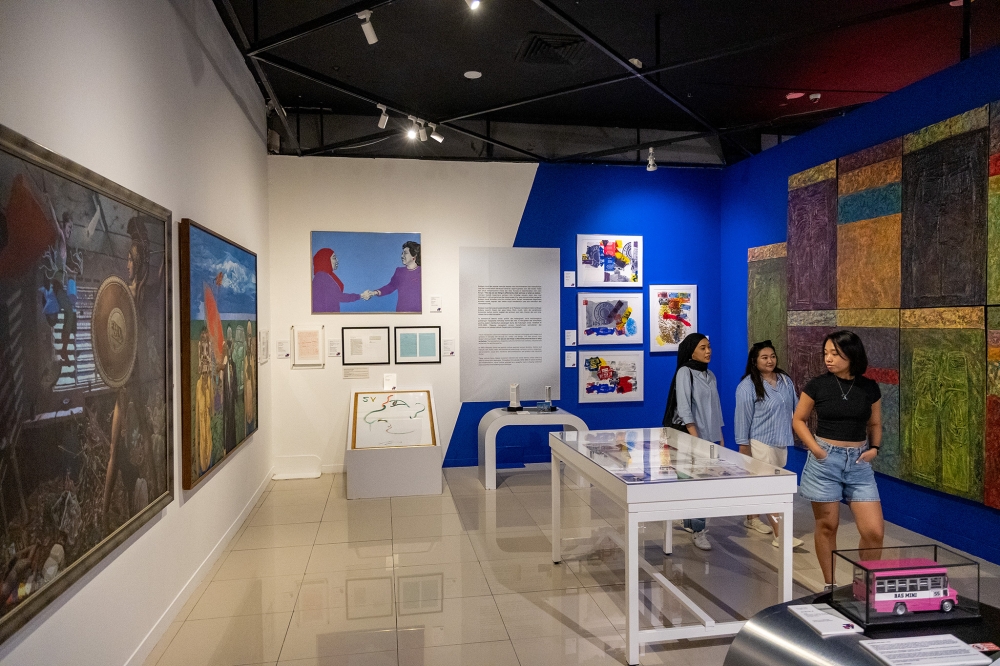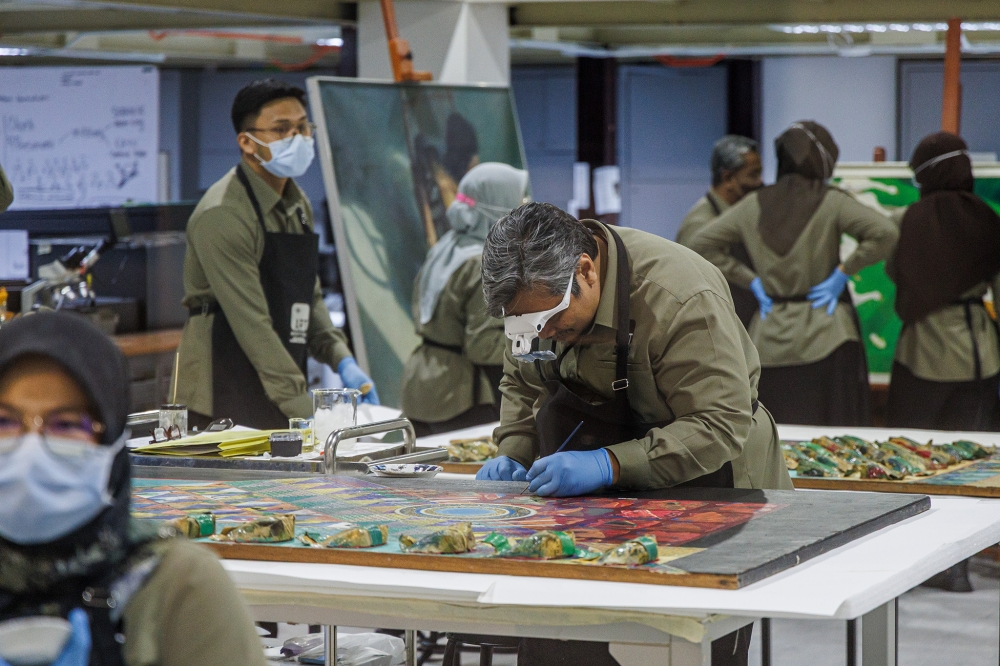KUALA LUMPUR, Nov 23 — Inside the quiet, temperature-controlled galleries of the National Art Gallery or Balai Seni Negara, decades-old paintings hang in stillness.
Visitors, including younger Malaysians, move slowly from one artwork to another, taking their time to absorb the stories on the walls, unaware of the meticulous work happening behind the scenes to keep these pieces alive for future generations.
Each piece on display carries layers of history, not just in its imagery, but in the way it’s preserved, interpreted and presented.
For the gallery, exhibitions are more than a showcase of aesthetics; they are narratives that reflect Malaysia’s social, cultural and political moments.
“It’s not just about aesthetics alone,” National Art Gallery director-general Amerrudin Ahmad said in an interview with Malay Mail.
“We look at the social context, how the artwork helped build the nation, and what was happening in history at that time,” the 55-year-old added.

Director General of the National Art Gallery Amerrudin Ahmad says its exhibitions are narratives that reflect Malaysia’s social, cultural and political moments. — Picture by Firdaus Latif
Reframing the past for new eyes
Amerrudin pointed to a batik painting by Datuk Chuah Thean Teng from 1968 as an example.
The piece, depicting scenes of tropical life — farmers ploughing fields, people harvesting fruit — may look simple to modern eyes. But at the time it was created, Penang was experiencing a period of social unrest.
“In 1968, it was a turbulent year. There was a hartal, which means strike. Artists could have expressed their anger and caused more tension,” he said.
“But Chuah Thean Teng calmly painted about commodities, the economy and social life. This approach is called counter-environment.
“Without realising it, he did not push people to be angry together. The impact was huge. He showed, at that time, what our economy was like and why it was important, so why do we wanna fight each other?”
For the gallery, works like these are not just artefacts, they are teaching tools that help younger generations understand unity and the importance of shared memory through visual knowledge.
“So our curators will explain it like that to the new generation, the importance of unity, togetherness, avoiding racial tensions,” he said.

Visitors exploring the exhibits at Balai Seni Negara. — Picture by Firdaus Latif
Reading art through five functions
The gallery categorises visual knowledge in five ways: artistic expression, narrative, functional, ritual or magical, and persuasive.
The last category is often the most immediate.
Amerrudin, who has served the institution for 27 years, recalled posters from the gallery’s 1979 to 1989 collection, where audiences could instantly recognise rock concerts from the imagery alone.
“People just look and say ‘oh, this is a rock concert’, but we didn’t label it. Curators highlight that at the time, there was a clash of values between conservative groups and the new generation,” he said.
“Perhaps traditional music was dominant, and suddenly foreign music came in, and the term ‘yellow culture’ emerged.
“People would see long hair, and the conservatives would say, ‘No, you can’t appear on TV like that, cut your hair,’ which actually happened at the time,” he added.
Curators as narrators and caretakers
Behind the scenes, curators take on two main roles: administrative and conceptual. They handle the logistics and technical work while also constructing curatorial narratives that bring historical and social contexts to life.
“The word curator comes from the Latin ‘cura’, or in English ‘cure’, to take care of and keep,” Amerrudin said.
This responsibility extends far beyond arranging paintings on walls.
Curators must understand conservation and preservation, including how artworks react to UV and infrared light, the types of materials used, and how long each piece can be displayed before it deteriorates.
“They must have both skills, because they manage collections of treasures. They need to know about UV exposure, radiation, infrared, types of material, not just think aesthetically.
“They need to understand fabric, canvas, wood, metal, whether paper is organic or non-organic, how long it can be exposed before it’s damaged. There’s a lifespan,” Amerrudin said.

Inside the Art Hospital at Balai Seni Negara. — Picture by Firdaus Latif.
Art Hospital: Where preservation meets science
Supporting the curators is the conservation department, informally known as “Art Hospital”.
Its full name, the National Art Conservation Repository Centre (Pusat Repositori Konservasi Seni Negara), was established in 2019 by the gallery’s board and is the first of its kind in Southeast Asia.
It oversees the management and conservation of creative works to ensure that Malaysia’s art ecosystem can be preserved and passed down through generations.
The National Art Gallery holds a hidden treasure trove of local visual art, boasting more than 5,000 works — some dating back over a century.
Before any artwork is exhibited, conservators measure and calculate appropriate light levels and exposure times.
The centre is located on the ground floor of the gallery building, where visitors can observe conservators at work through a viewing area, offering the public a rare glimpse into the preservation process.
“They will tell the curators that certain artworks can only be displayed for three months,” Amerrudin explained.
“If it’s very fragile, we discuss making a reproduction for display and keeping the original safe. This is common practice worldwide. We label it clearly as a reproduction.”
Such decisions are not taken lightly. When dealing with delicate works on paper, curators, conservators and the director-general make collective decisions on whether to rotate, reproduce or withdraw artworks from public view.
“Sometimes the public comes from far away and asks why the original is not on display. But we must protect the artwork’s lifespan,” he said.
Another way to protect artworks, Amerrudin said, is by placing sofas or railings in front of them during exhibitions to prevent visitors from touching the pieces.
“That’s part of the curator’s technical considerations — safety, and so on,” he said.
Keeping the permanent collection alive
Permanent exhibitions typically run for three years to give both locals and foreign visitors a chance to view the nation’s most valuable works.
The gallery is now in the midst of changing its permanent exhibition after the previous cycle ended.
One current project focuses on the economy, inspired by the Indonesia–Malaysia–Thailand Growth Triangle established in 1993.
“Before that, it was hard to find tom yum here. After it started, you can also find tom yum in any Felda villages,” he said, adding that the same applied to Nasi Padang, a famous meal from Indonesia.
“That was all structured by our government to boost the regional economy. So that’s a special project of artistic expression based on that region.”
As visitors make their way through the galleries, these curatorial choices – from historical framing to scientific preservation – quietly shape how national memory is experienced.
The role of the National Art Gallery is not only to display art but also to interpret, protect and pass it on.

